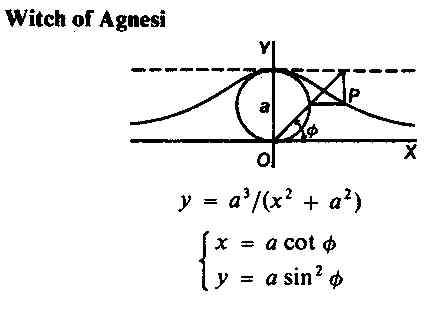Instituzioni analitiche
According to Dirk Jan Struik, Agnesi is "the first important woman mathematician since Hypatia (fifth century A.D.)". The most valuable result of her labours was the Instituzioni analitiche ad uso della gioventù italiana, (Analytical Institutions for the Use of Italian Youth) which was published in Milan in 1748 and "was regarded as the best introduction extant to the works of Euler." In the work, she worked on integrating mathematical analysis with algebra. The first volume treats of the analysis of finite quantities and the second of the analysis of infinitesimals.
A French translation of the second volume by P. T. d'Antelmy, with additions by Charles Bossut (1730–1814), was published in Paris in 1775; and Analytical Institutions, an English translation of the whole work by John Colson (1680–1760), the Lucasian Professor of Mathematics at Cambridge, "inspected" by John Hellins, was published in 1801 at the expense of Baron Maseres. The work was dedicated to Empress Maria Theresa, who thanked Agnesi with the gift of a diamond ring, a personal letter, and a diamond and crystal case. Many others praised her work, including Pope Benedict XIV, who wrote her a complimentary letter and sent her a gold wreath and a gold medal.
Witch of Agnesi
The Instituzioni analitiche..., among other things, discussed a curve earlier studied and constructed by Pierre de Fermat and Guido Grandi. Grandi called the curve versoria in Latin and suggested the term versiera for Italian, possibly as a pun: 'versoria' is a nautical term, "sheet", while versiera/aversiera is "she-devil", "witch", from Latin Adversarius, an alias for "devil" (Adversary of God). For whatever reasons, after translations and publications of the Instituzioni analitiche... the curve has become known as the "Witch of Agnesi"
Other
Agnesi also wrote a commentary on the Traité analytique des sections coniques du marquis de l'Hôpital, which, though highly praised by those who saw it in manuscript, was never published.
Later life
In 1750, on the illness of her father, she was appointed by Pope Benedict XIV to the chair of mathematics and natural philosophy and physics at Bologna, though she never served. She was the second woman ever to be granted professorship at a university, Laura Bassi being the first. In 1751, she became ill again and was told not to study by her doctors. After the death of her father in 1752 she carried out a long-cherished purpose by giving herself to the study of theology, and especially of the Fathers and devoted herself to the poor, homeless, and sick, giving away the gifts she had received and begging for money to continue her work with the poor. In 1783, she founded and became the director of the Opera Pia Trivulzio, a home for Milan's elderly, where she lived as the nuns of the institution did.
Remembrance
Witch of Agnesi, a curve
A crater on Venus
Asteroid 16765 Agnesi (1996)
.


No comments:
Post a Comment